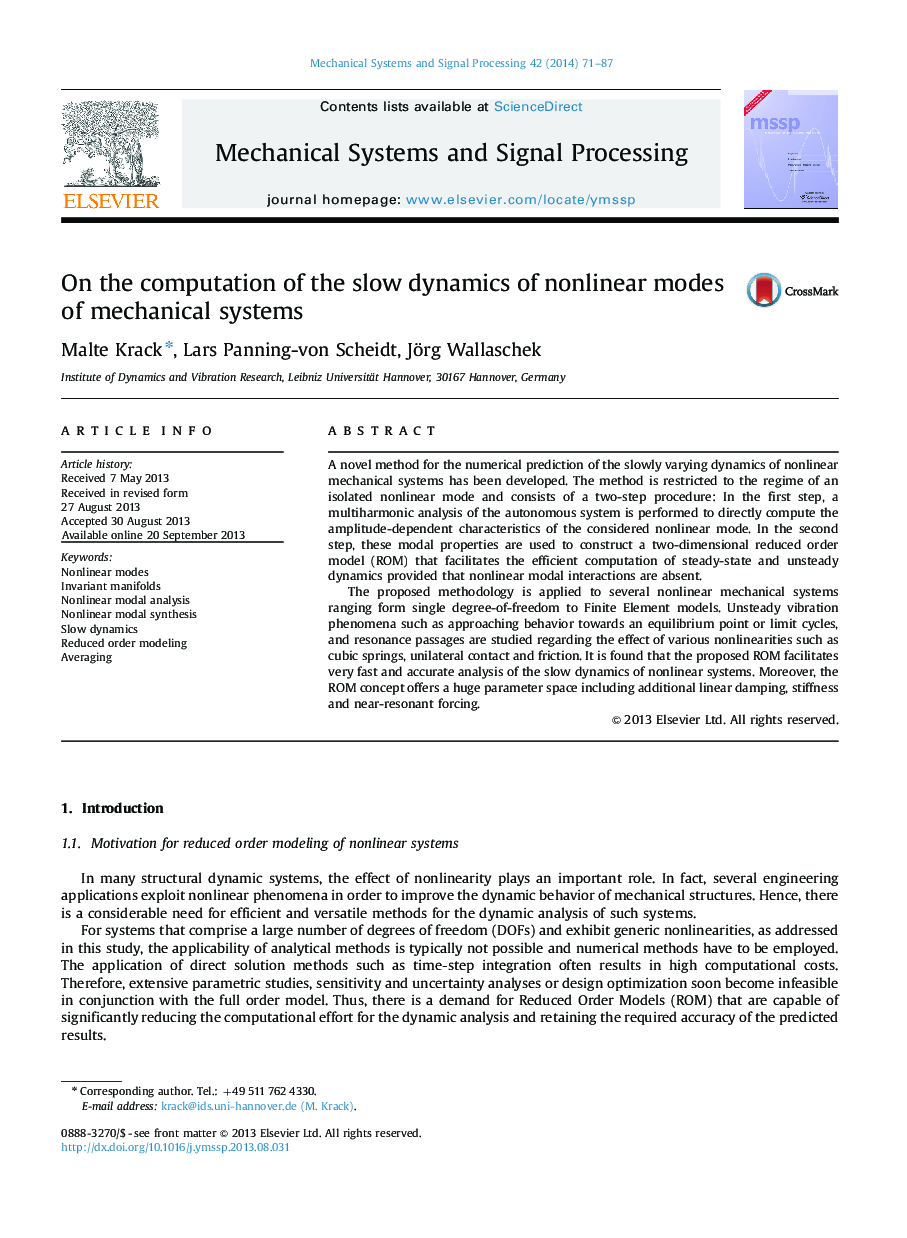| Article ID | Journal | Published Year | Pages | File Type |
|---|---|---|---|---|
| 561167 | Mechanical Systems and Signal Processing | 2014 | 17 Pages |
•Efficient reduced order model for computing dynamics of nonlinear modes.•Applicable to strongly nonlinear and non-conservative mechanical systems.•Prediction of steady-state/unsteady dynamics in autonomous/non-autonomous case.•Linear damping and near-resonant forcing do not require re-computation of modal basis.
A novel method for the numerical prediction of the slowly varying dynamics of nonlinear mechanical systems has been developed. The method is restricted to the regime of an isolated nonlinear mode and consists of a two-step procedure: In the first step, a multiharmonic analysis of the autonomous system is performed to directly compute the amplitude-dependent characteristics of the considered nonlinear mode. In the second step, these modal properties are used to construct a two-dimensional reduced order model (ROM) that facilitates the efficient computation of steady-state and unsteady dynamics provided that nonlinear modal interactions are absent.The proposed methodology is applied to several nonlinear mechanical systems ranging form single degree-of-freedom to Finite Element models. Unsteady vibration phenomena such as approaching behavior towards an equilibrium point or limit cycles, and resonance passages are studied regarding the effect of various nonlinearities such as cubic springs, unilateral contact and friction. It is found that the proposed ROM facilitates very fast and accurate analysis of the slow dynamics of nonlinear systems. Moreover, the ROM concept offers a huge parameter space including additional linear damping, stiffness and near-resonant forcing.
